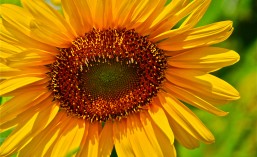For a seed to achieve its greatest expression,
it must come completely undone.
The shell cracks, its insides come out,
and everything changes.
To someone who doesn’t understand growth,
it would look like complete destruction.
~Cynthia Occelli

“Of all the wonderful things in the wonderful universe of God, nothing seems to me more surprising that the planting of a seed in the blank earth and the result thereof. Take that Poppy seed, for instance: it lies in your palm, the merest atom of matter, hardly visible, a speck, a pin’s point in bulk, but within it is imprisoned a spirit of beauty ineffable, which will break its bonds and emerge from the dark ground and blossom in a splendor so dazzling as to baffle all powers of description.” ~Celia Thaxter
Where I live winters are mild and so poppies must be sown in the fall. After weeks of making preparations, today was the day to sow not only my poppy seeds, but also the hollyhock, larkspur, and bachelor button seeds. Now in a week or so they will germinate, and I shall squeal with delight once more to find little green babies popping up everywhere. Among the other truly amazing things about the sowing process, is the fact that these small new seedlings will survive some pretty cold days and maybe even some ice and snow. But the leaves of trees, many of which have yet to fall, will eventually blanket the ground and keep my babies warm and safe until the spring’s sun urges them upward and onward. And as for me going out to check on them throughout winter’s often gloomy and forbidding days will keep me thrilled and hopeful!
They sowed fields and planted vineyards that yielded a fruitful harvest… ~Psalm 107:37 ✝
**Images of poppy seed pods and seeds found on Pinterest; border and special effects via iPiccy


